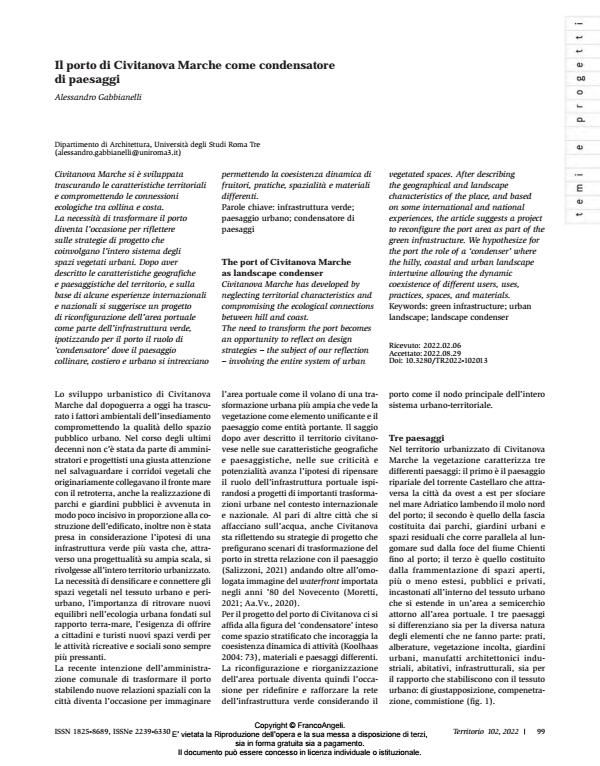The port of Civitanova Marche as landscape condenser
Journal title TERRITORIO
Author/s Alessandro Gabbianelli
Publishing Year 2023 Issue 2022/102
Language Italian Pages 8 P. 99-106 File size 319 KB
DOI 10.3280/TR2022-102013
DOI is like a bar code for intellectual property: to have more infomation
click here
Below, you can see the article first page
If you want to buy this article in PDF format, you can do it, following the instructions to buy download credits

FrancoAngeli is member of Publishers International Linking Association, Inc (PILA), a not-for-profit association which run the CrossRef service enabling links to and from online scholarly content.
Civitanova Marche has developed by neglecting territorial characteristics and compromising the ecological connections between hill and coast. The need to transform the port becomes an opportunity to reflect on design strategies - the subject of our reflection - involving the entire system of urban vegetated spaces. After describing the geographical and landscape characteristics of the place, and based on some international and national experiences, the article suggests a project to reconfigure the port area as part of the green infrastructure. We hypothesize for the port the role of a ‘condenser’ where the hilly, coastal and urban landscape intertwine allowing the dynamic coexistence of different users, uses, practices, spaces, and materials.
Keywords: green infrastructure; urban landscape; landscape condenser
Alessandro Gabbianelli, Il porto di Civitanova Marche come condensatore di paesaggi in "TERRITORIO" 102/2022, pp 99-106, DOI: 10.3280/TR2022-102013